Location: Arahama, Wakabayashi Ward, Sendai
Discovering the Remains of Arahama
From my apartment near downtown Sendai I could hear booms echo from far away.
“What’s going on tonight?” I mused to myself, and then remembered there was an Obon festival with lanterns and fireworks at Arahama on Sendai's coast .
If I could hear the fireworks over the city full of noisy cars and trucks, the famous poet Shimazaki Toson must not have been exaggerating when he described hearing the waves of Arahama crashing from his quiet room in an inn in the city center. Today, an entire city of high-rise apartments and businesses stand between that long-gone inn and the shore. But connections remain. Last year I joined a group, the 3.11 Omoide Tour, which chartered a special bus to Arahama to revisit this neighborhood on Sendai’s coast with former residents. By Sendai Station’s east exit is a memorial stone to Toson and the inn where he heard the waves, and our bus happened to leave from there.
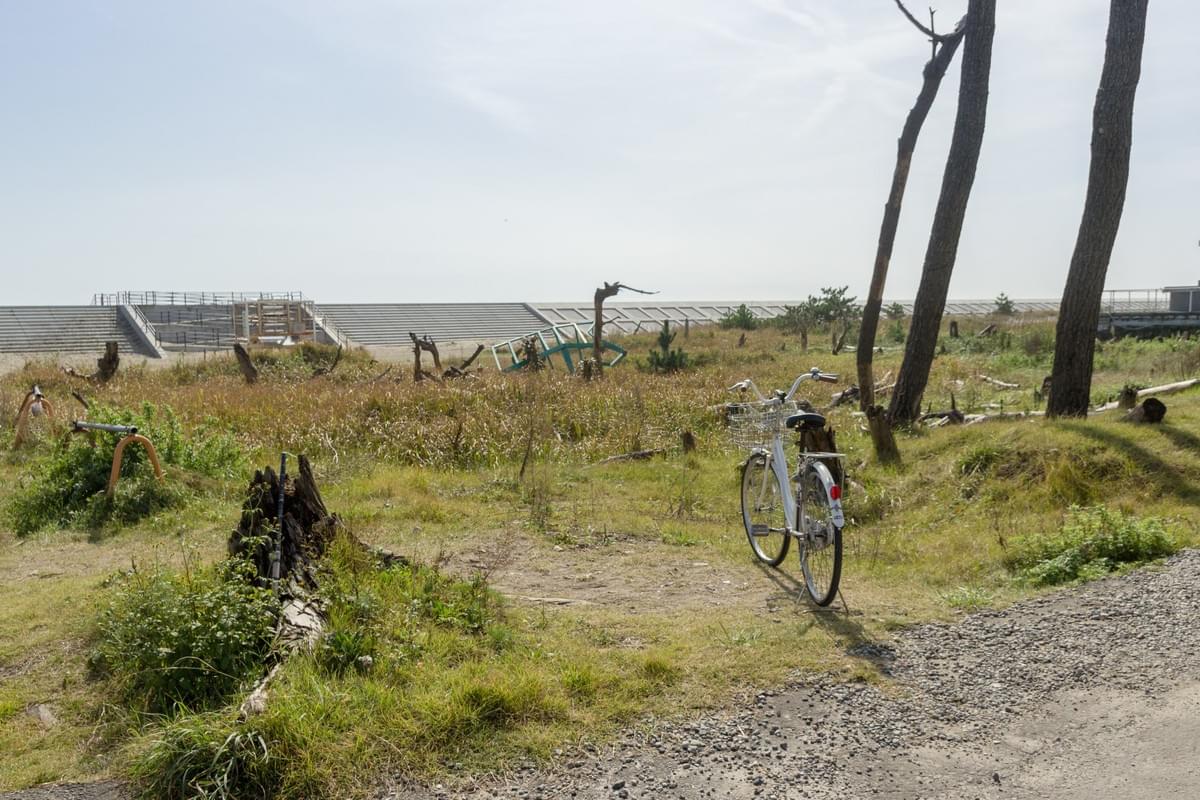
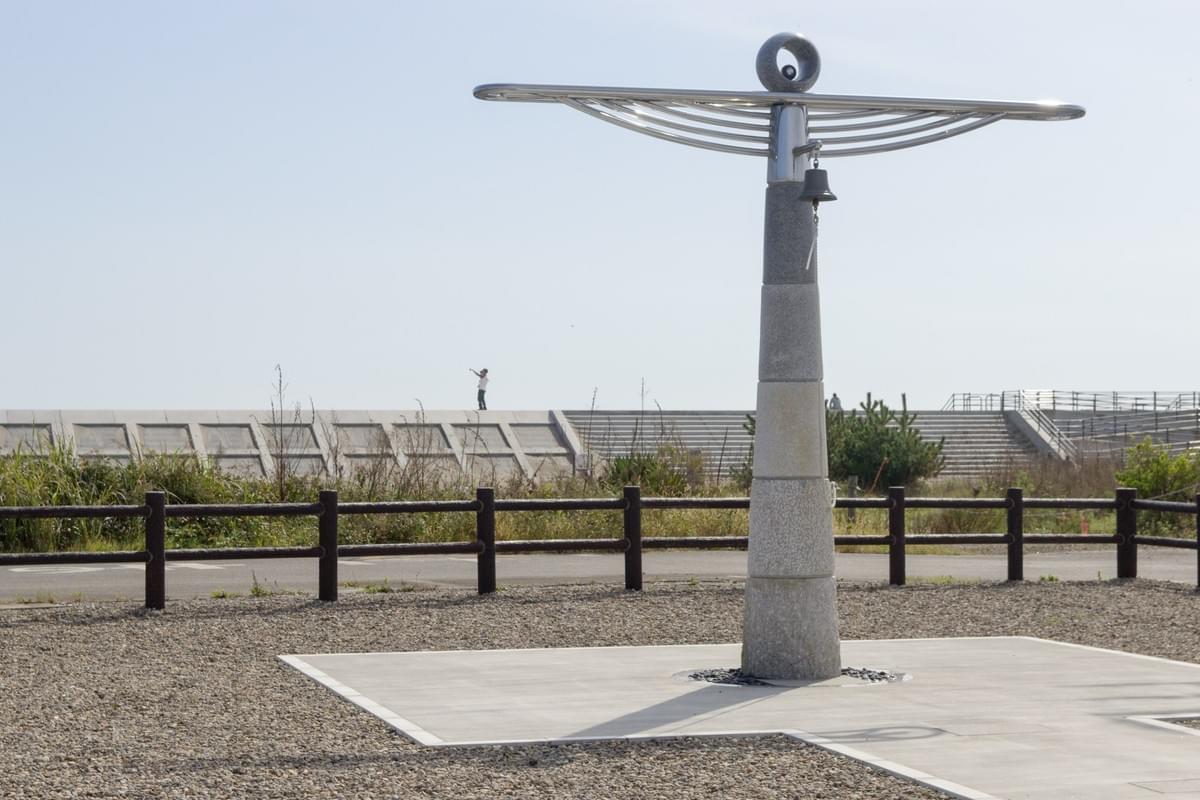
As our bus neared the coast, my first impression was of a construction zone characterized by heaps of fresh dirt. The main passable road took us by the still-standing Arahama Elementary School, and we parked by a large memorial. A bell hung from its stark cross-like shape, its rounded metal glowing in the sunlight. A low fence separated the new memorial from the old neighborhood with its dense weeds, loose gravel, and the remains of houses. Beyond us loomed a tall seawall, its concrete freshly white, yet to be weathered by the sea. Beside it was a statue to Kannon, the Buddhist Goddess of Mercy. I can faintly hear the waves crash, but there is no sea visible here.
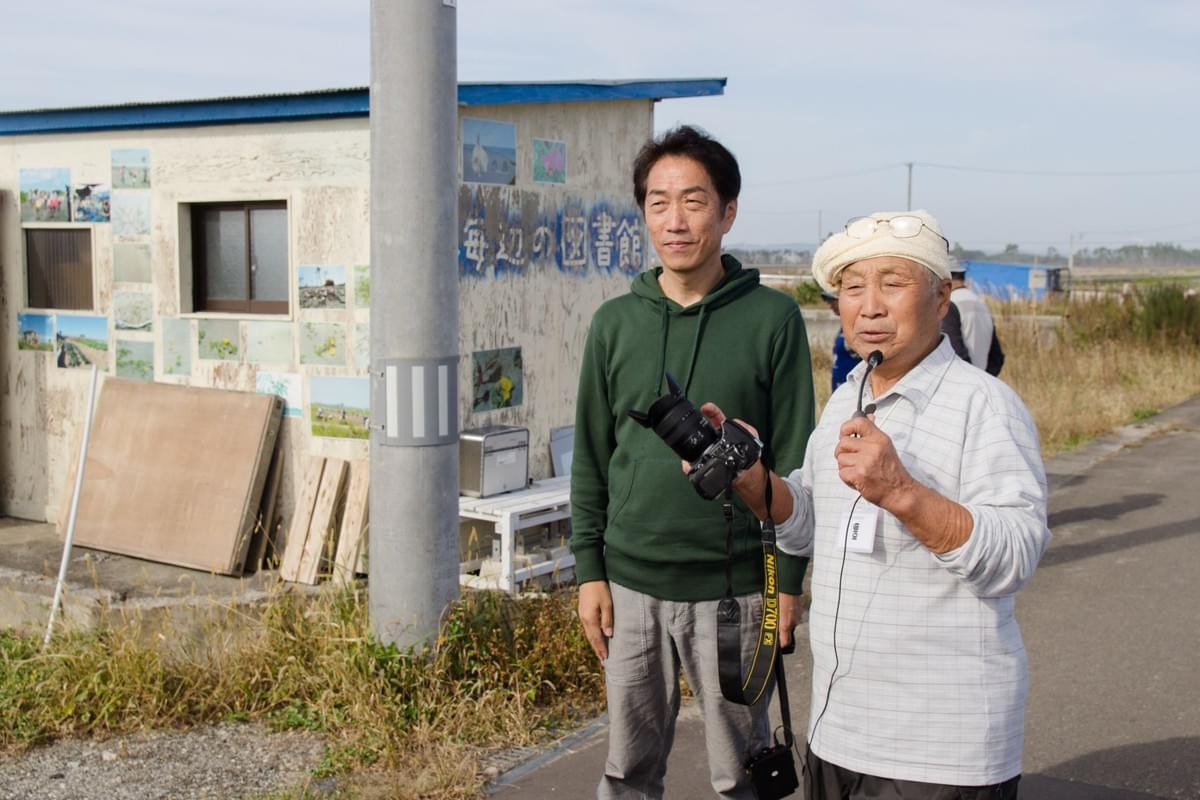
The previous month I had taken a tour with the same group to neighboring Gamo, just to the north. It was close to being erased as a neighborhood as the construction equipment moved in to prepare it for warehouses and factories as an extension of sprawling Sendai Port.
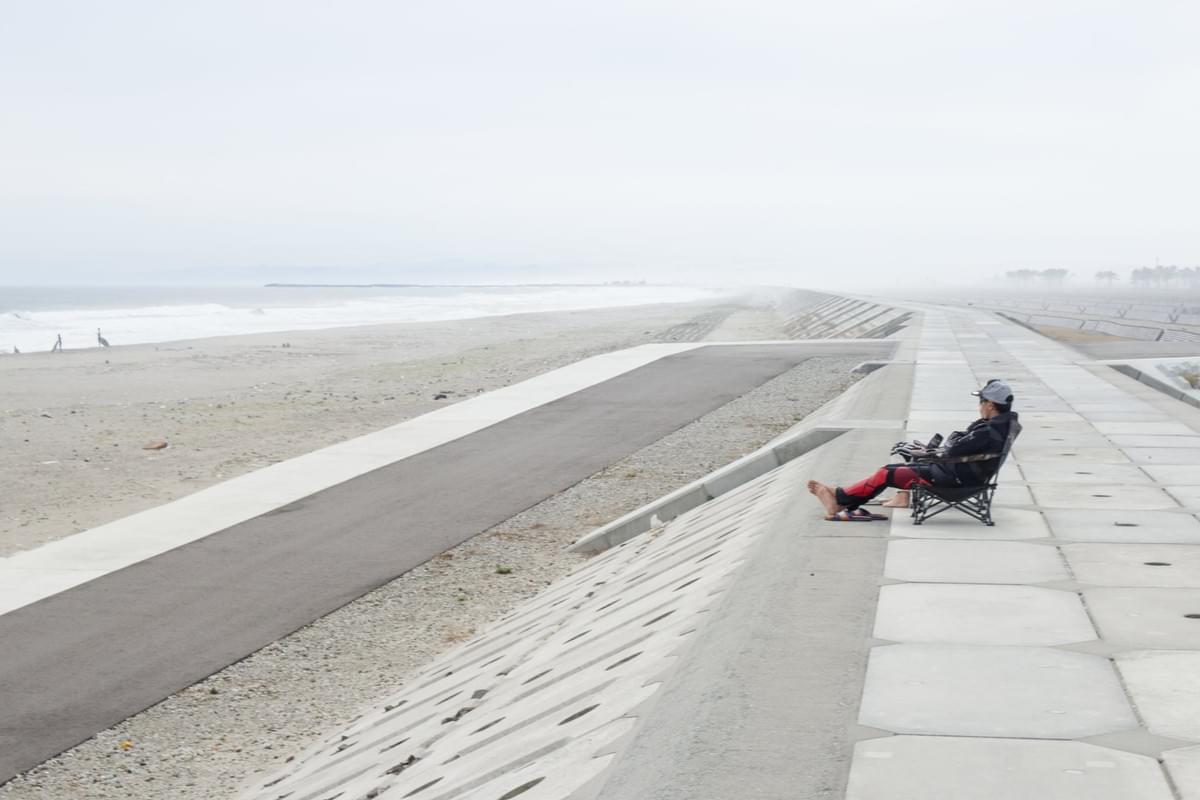
Arahama felt different to me. I was surprised at how many people were already there when our group arrived. From the top of the seawall I could see couples strolling on the beach. Cyclists and joggers exercised on the long flat top of seawall which stretched into the hazy distance. Surfers rode the waves just past the end of the breakwaters as their friends watched from beach chairs.
With my back to the sea I could see the old neighborhoods were left in complete ruins, dense weeds filling in the spaces between the old foundations of homes. Crows circled and landed on the few abandoned buildings which remained standing. A few young pine trees burst through what used to be someone’s living room. These survivors of a coastal pine forest improbably refused to be bowed by that deadly wave, the salty sea air, or the concrete blocking the soil.
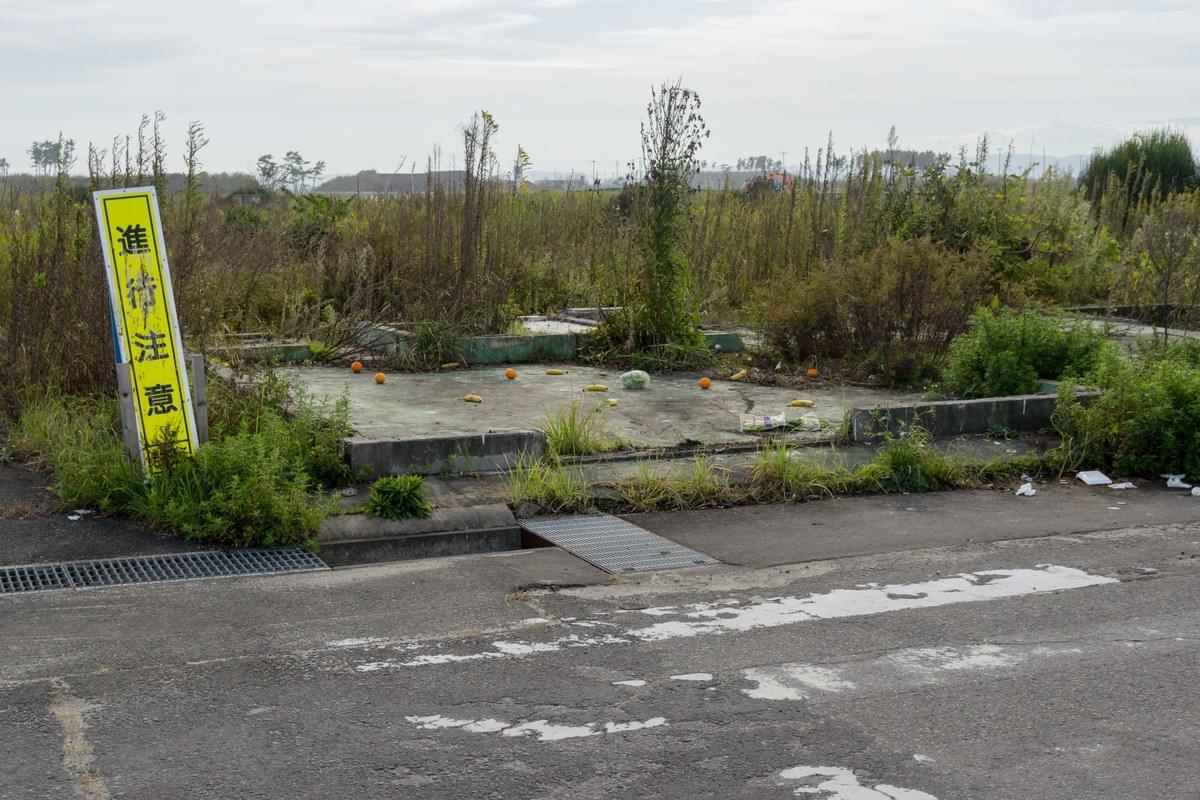
I walked down from the seawall to see the neighborhood more closely. One home had a foundation with the concrete portioned into rooms. The raised concrete sides let water fill it up enough for aquatic plants to take root. Bugs skittered on the surface of this impromptu reflecting pool. Another man approached the Kannon carefully. He kneeled at the base and filled a flower holder with water. He put in flowers and silently prayed. As I continued my walk, a man stopped his van in front of a home and opened the window. Oranges, bananas, and then a bag of fresh greens flew out. These offerings landed on the foundation of a home. He stayed by it in the van for a while. This entire area was a memorial.
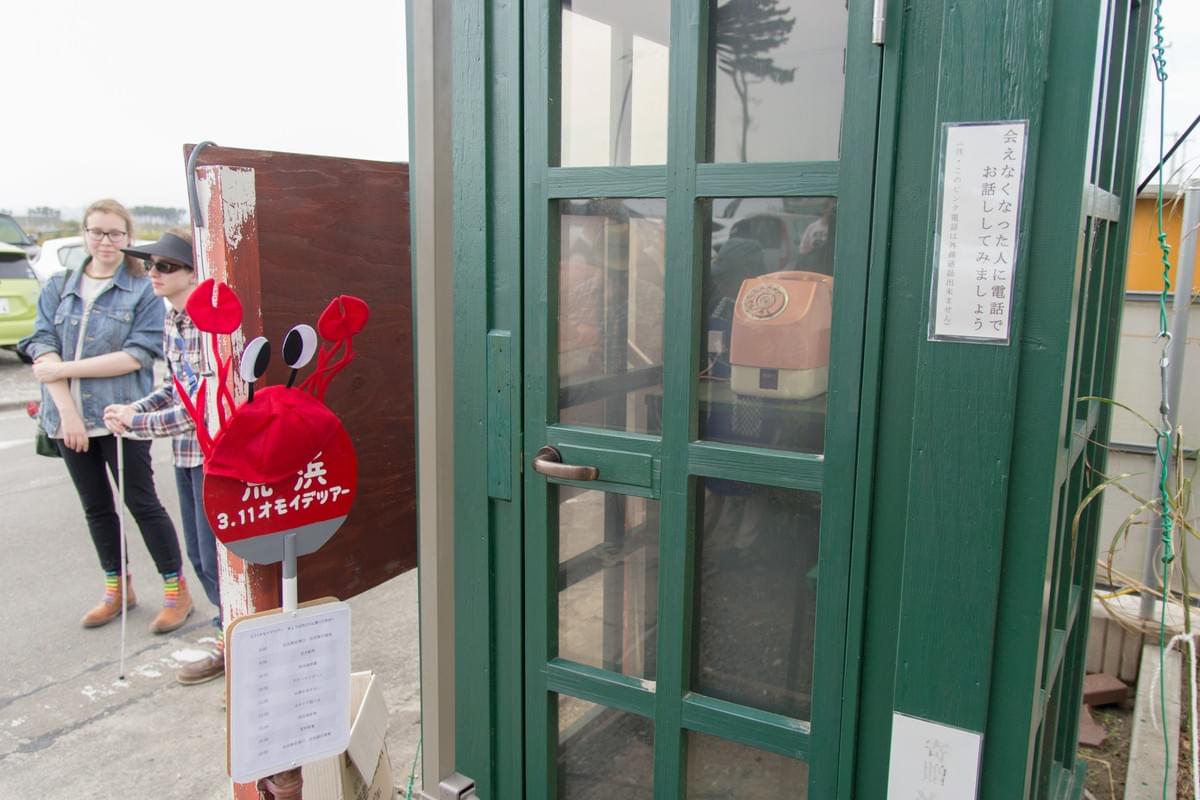
The only building still standing was the Arahama Elementary School, a massive concrete structure which took the brunt of the tsunami and survived. Elsewhere on the coast, most buildings like this have been torn down to make way for rebuilding, or for the loss they represent. I was glad to see this one preserved as a reminder. I entered the dark first floor hallway. Harsh daylight coming in through the classroom's windows revealed the extent of the damage- its floor tiles ripped apart and blackboards bowed. There were watermarks by the ceiling. I headed up to the second floor where the window revealed a concrete veranda with sturdy steel bars that had been twisted, and solid concrete broken off by the 10 meter high wave.
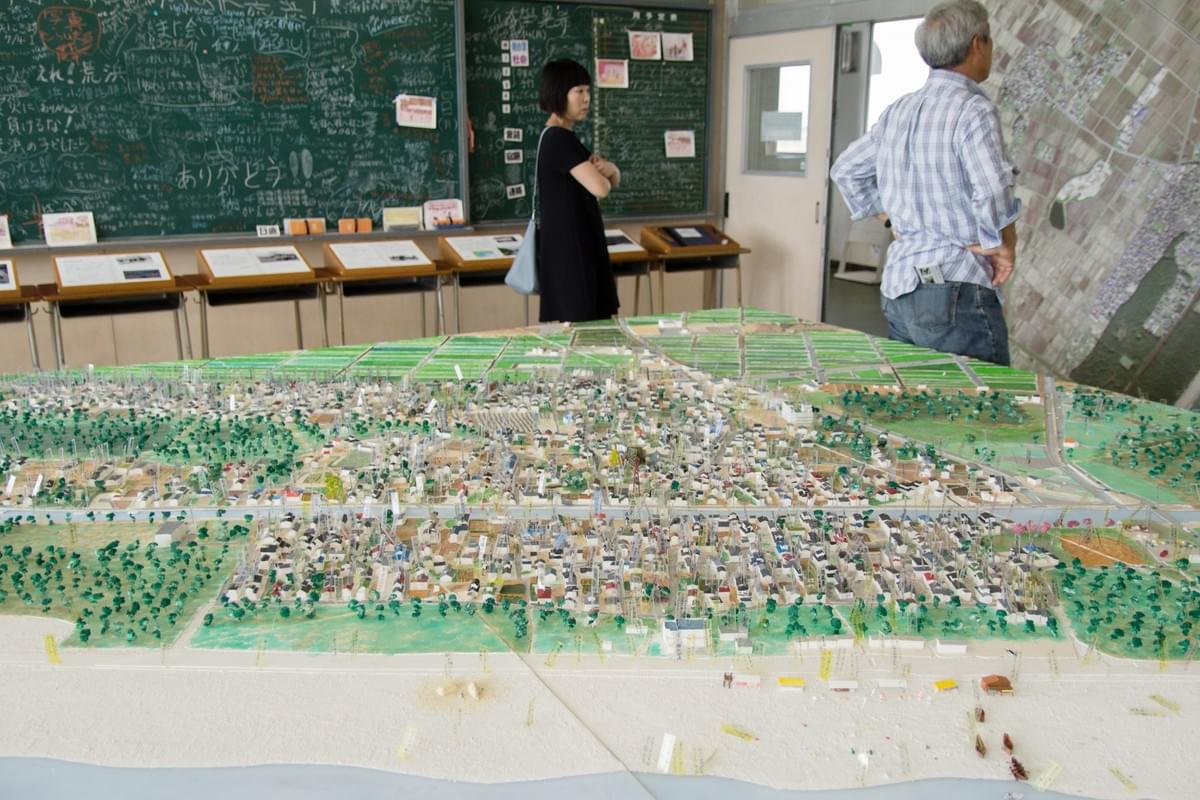
The undamaged upper floors were full of interesting exhibits and testimonials. One room played films of the experience of surviving Arahama on that day. It had views from helicopters of the successive waves which flooded the neighborhood, leaving this school as an island in the Pacific for a time. A 3D model showed the homes and businesses that once stood in Arahama. I put my eye down to the level of the inland canal which ran through the neighborhood to imagine what it must have been like. Later on the tour, a former resident told me this was the original meaning of “port”; a waterway that served as the door to the sea, not the harbor area that we think of today.
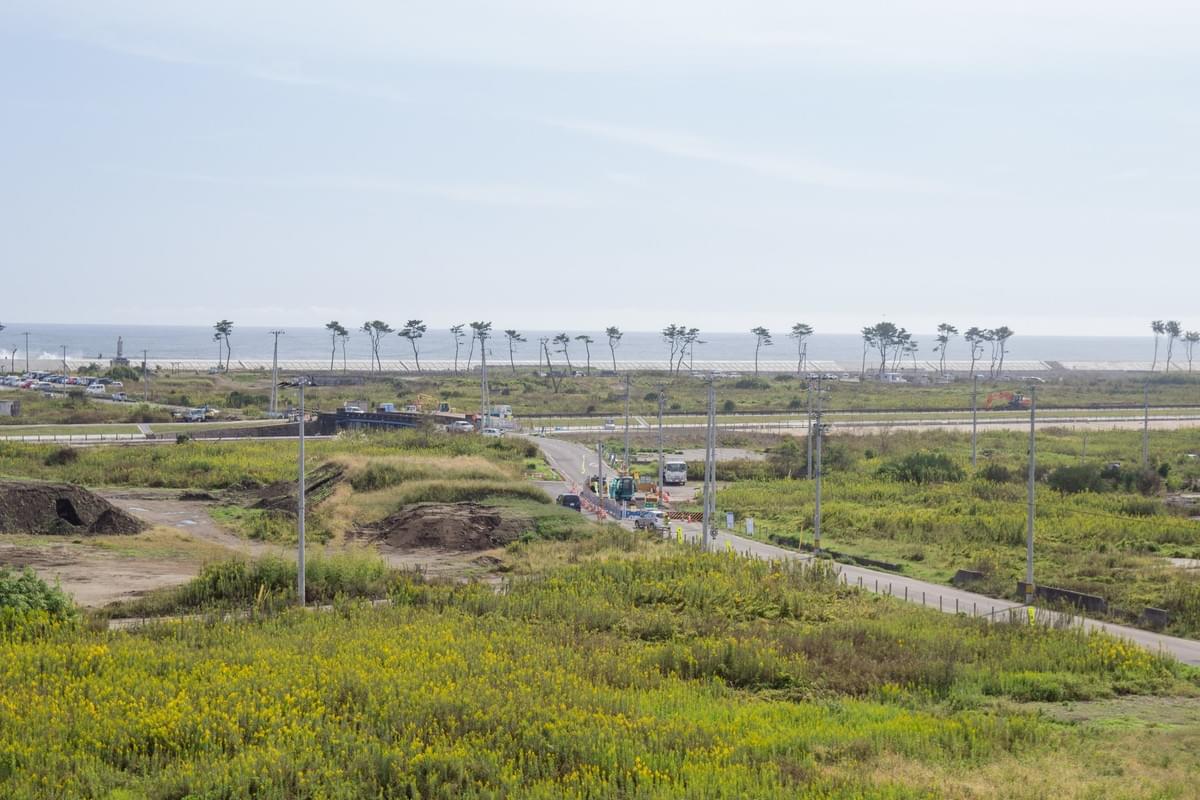
I then headed up to the roof, where schoolchildren took refuge and were saved during the disaster. As the last building standing, the view went on unimpeded, disappearing into the scattered pine trees lost in fog to the south and the hazy city to the west.
Coincidentally, the same week as my visit, Sendai’s Gallery TURNAROUND held an event connected with Arahama. A young artist Haruya Nakajima rapped excerpts from Wakanashu by Shimazaki Toson as images from Arahama looped in the background.
Is it not dreary when the rough waves さみしいかなや荒波の
Crash and splinter against the rocks? 岩に砕けて散れるとき
Is it not dreary when the winter sun かなしいかなや冬の日の
Returns home with the tide? 潮とともに帰るとき
Who, when gazing out upon the currents, 誰か波路を望み見て
Does not long for home? そのふるさとを慕はざる
Who, when seeing the tide go out, 誰か潮の行くを見て
Does not hold dear our world? この人の世を惜まざる
Pillow of Grass (草枕) from Wakanashu (若菜集) 1897
Translation by Nicholas Eugene Albertson
Looking out over the ruins of Arahama, it is hard not to feel a sadness for the neighborhoods which are gone. There is no comfort to be found for those who lived here, only for outsiders like Toson and ourselves. However, 2011 is not the end of the story of Arahama. There is still life to be felt in the school which preserves lessons from the disaster, in the surfers who continue to challenge the waves with their bodies, in the couples who walk along the long beach, and even in the wild weeds which grow according to no plans but their own and weave their own community freed from human interference. Disaster-related tours and memorial festivals are a bridge between the new Arahama and the old. Visit to understand its past and be part of its future.
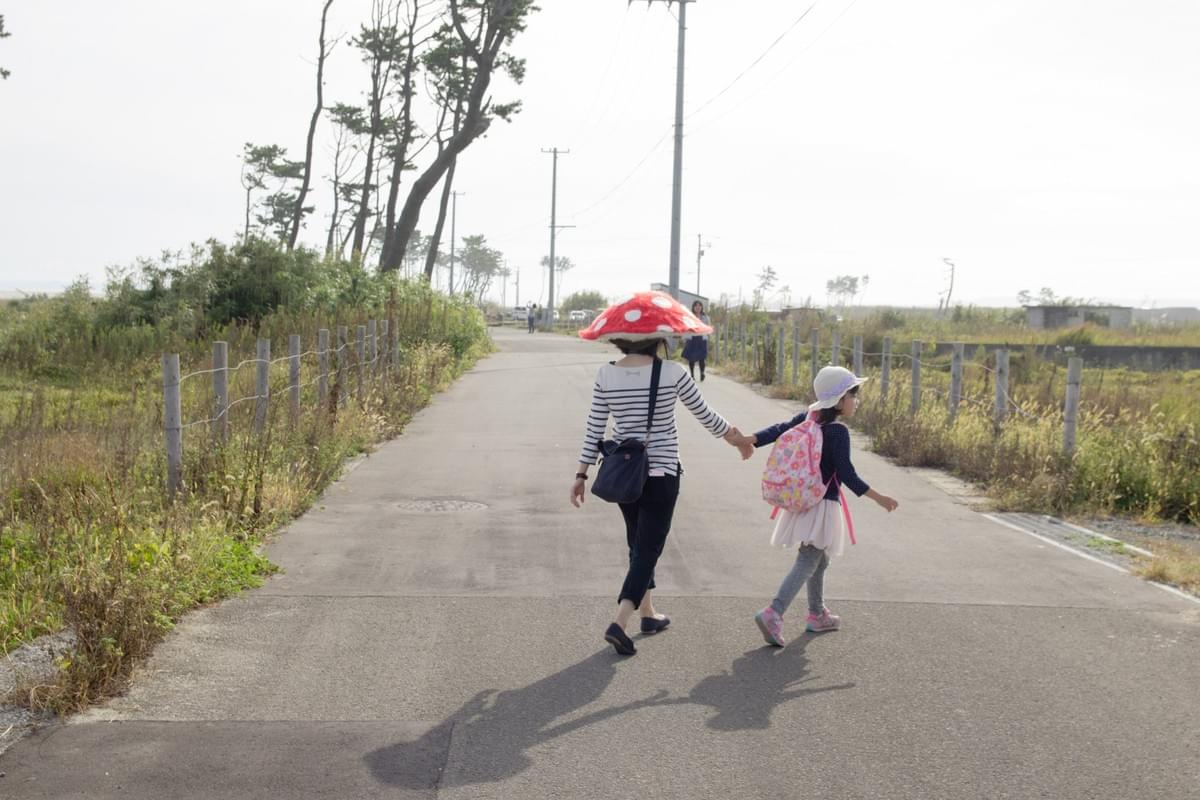
Tours to Sendai's Coast
Sendai Tourist Information Desk
(Starting Sept. 2018) Periodic tours to Arahama and Arai to meet with former residents who discuss the disaster and the future of the area. English interpreter included.
3.11 Omoide Tour
Monthly visits to places along Sendai’s coast where former residents can share memories with visitors. The purpose is to archive these stories through a NPO, the 3.11 Memorial Archive. All are welcome to take part but there is no English interpretation.
Sources
Translation of Wakanashu by Nicholas Eugene Albertson:
Shimazaki Toson's Pillow of Grass 草枕 (Japanese text) http://www.nextftp.com/y_misa/touson/touson_w10.html

